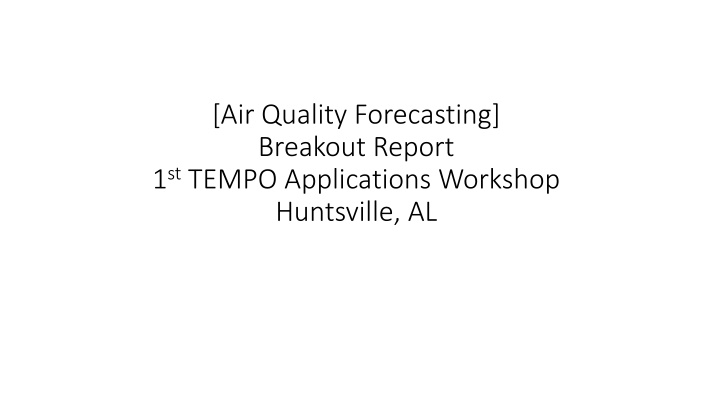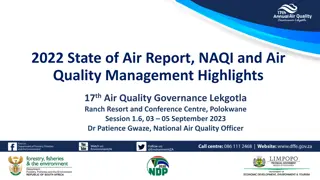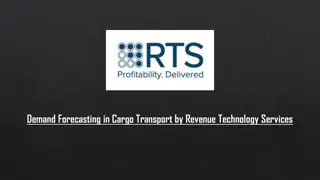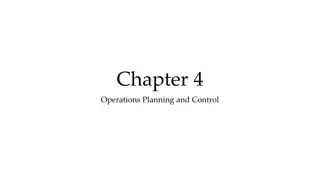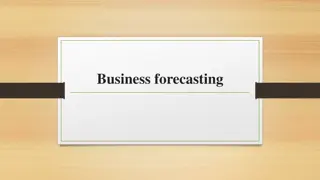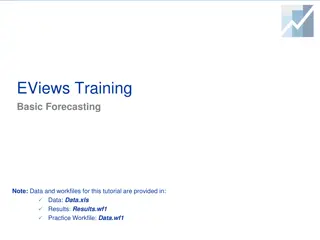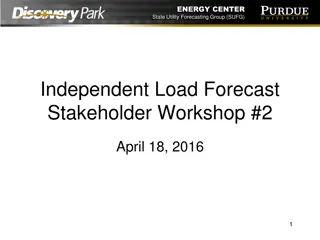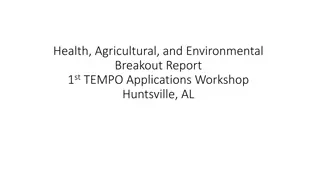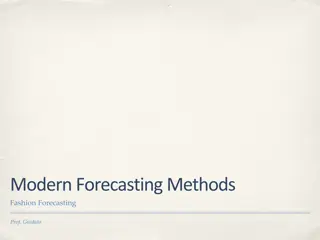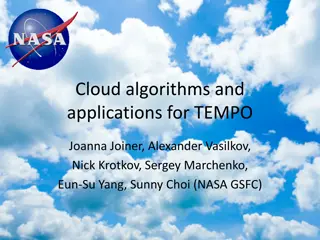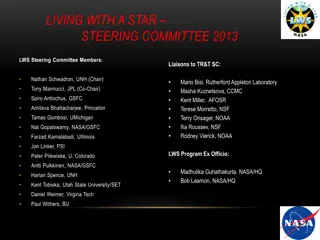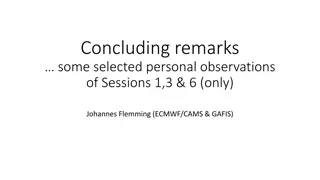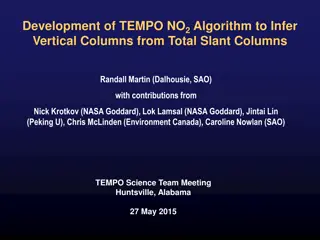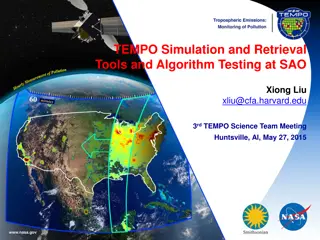Insights into Air Quality Forecasting Breakout Report from TEMPO Applications Workshop
The breakout report from the TEMPO Applications Workshop in Huntsville, AL highlights the potential of TEMPO data in improving air quality forecasting. It discusses the measurement of ozone precursors, ozone, and PM2.5 on an hourly scale, emphasizing the value of high spatial and temporal resolution for understanding atmospheric processes. Recommendations include integrating TEMPO data into forecasting tools, improving GEOTASO retrieval capability, and utilizing TEMPO data for emission constraints and model evaluation.
Download Presentation

Please find below an Image/Link to download the presentation.
The content on the website is provided AS IS for your information and personal use only. It may not be sold, licensed, or shared on other websites without obtaining consent from the author.If you encounter any issues during the download, it is possible that the publisher has removed the file from their server.
You are allowed to download the files provided on this website for personal or commercial use, subject to the condition that they are used lawfully. All files are the property of their respective owners.
The content on the website is provided AS IS for your information and personal use only. It may not be sold, licensed, or shared on other websites without obtaining consent from the author.
E N D
Presentation Transcript
[Air Quality Forecasting] Breakout Report 1stTEMPO Applications Workshop Huntsville, AL
General Comments 1. First time a suite of ozone pre-cursors, ozone, PM2.5 will be measured on hourly time scale. Lends itself to investigating photochemical processes leading to ozone and PM2.5 and see how this knowledge can be helped to improve model chemistry and thus predictions. TEMPO high spatial and temporal resolution will be valuable for regions of complex meteorological flows (ie mountain/valley flows, lake/sea breeze circulations) TEMPO free tropospheric ozone retrievals will be valuable for constraining background ozone, intercontinental transport and stratospheric intrusion events TEMPO NO2 (and potentially H2CO) columns will be valuable for constraining emissions and surface ozone predictions GOES-R/TEMPO synergies will be critical for wildfire, lightning NOx, VolAsh, aerosol/cloud interaction forecasting Lightning imager flash energetics can be used to get NOx emissions estimates: use Gulf of Mexico observations to compare TEMPO NOx column to GLM NOx emissions Coupling between aerosols, deposition and coastal ocean color should be expanded. TEMPO has wavelengths for ocean color retrieval but lacks wavelengths for atmospheric correction. Intercomparison between TEMPO and GOES-R aerosol product s will be valuable for understanding information content of different retrievals (useful for data assimilation constraints) Recommendations: Use GEOTASO data as TEMPO proxy to demonstrate real applications of TEMPO data (ie, emission constraints, improved ozone/aerosol forecast) Needs advancement in GEOTASO retrieval capability Continued efforts to reacognize that to fully utilize TEMPO data and the GEO Constellation we need to maintain a global perspective (including the modeling elements) Integrate TEMPO products into web forecasting tools such as eIDEA and visualization and data access tools such as World View Need to develop tools (ie RSIG, WHIPS) to conduct model evaluation using TEMPO data 2. 3.
Question 1: TEMPO will provide first of its kind temporal (1 hourly) and spatial (2-km pixel width in north-south; 4.5-km pixel length in east-west) resolution with limited data latencies allowing for the community to continue existing applications and facilitate new ones. What are the discipline or focus area science questions or application challenges that can be addressed with TEMPO data? Improved characterization of background ozone for regional AQ prediction Improved constraints on NOx emissions and absorbing AOD and aerosol heights will improve forecasts of O3 production in fire plumes
Question 2: There are a number of current in situ and remotely sensed data that measure atmospheric constituents, such as tropospheric ozone (O3), nitrogen dioxide (NO2), aerosols, and other trace pollutants (formaldehyde [H2CO], glyoxal [C2H2O2], and sulfur dioxide [SO2]). Which instruments/observations do you currently use for your work? AIRNow, Aeronet, OMI (Total ozone, absorbing AOD, Tropospheric NO2 column, SO2 column, trend analysis for emission adjustment), MODIS VIIRS, GOES, AHI AOD, CALIPSO/CATS aerosol extinction for validation, MISR, AIRS O3, CO
Question 3: A variety of current and future partners exist in the community. Who are your key partners or end user organizations on tasks, projects, or processes that use NASA satellite data? Who are additional potential users? NWS: State and local AQ forecasters, global scale modeling ARL: Washington and Alaska VAAC, smoke forecasts Washington State: Pacific Northwest, US Forest Service Georgia Tech: SE States, Federal and State Forest Service U-Iowa: Support for Airborne campaigns
Question 4: Given what you have learned about TEMPO over the last two days, what additional or higher level data products from TEMPO might be useful in your science or applications tasks? (Include the characteristics of the product and other requirements, e.g. resolution, accuracy, data latency, data format.) Rank them in importance. 1. Quantification of uncertainty, detection limits, and any data aggregation or missing values 2. Availability of a priori (and their obs error covariances were applicable) as well as sufficiently detailed information on retrievals and removal of stratospheric components 3. Quality flags, observation error std. dev., observation error correlation matrix where appropriate (e.g. for ozone profile, averaging kernels were appropriate) 4. Cloud info and some info on expect impact from clouds if some data provided for partly cloudy conditions. 5. Regional sub setting capability to limit data volume
Question 5: Within your organization, what are the biggest impediments limiting your use of new satellite data and products? NWS: Latency (require 2 hour latency for operational forecasting, unless 24hr analysis cycle is performed prior to forecast, older forecast) Washington State: Limited temporal sampling due to polar orbit, Uncertianty estimates and retrieval sensitivity, lack of aerosol speciation U-Iowa: Retrieval artifacts (cloud clearing, surface reflectance, land/ocean biases)
Question 6: What data formats (e.g., NetCDF, HDF, GIS-compatible, etc.) do you need for your science or applications tasks? GIS layer files (e.g., ArcGIS) for derived pollutant surfaces; kml for Google Earth BUFR ASCII or NetCDF files available in real-time on an FTP site for automated download, analysis and alerting Make data available by latitude,longitude AND on a grid. Trying to extract data at specific lat-long points is a major pain for a lot of met data format
